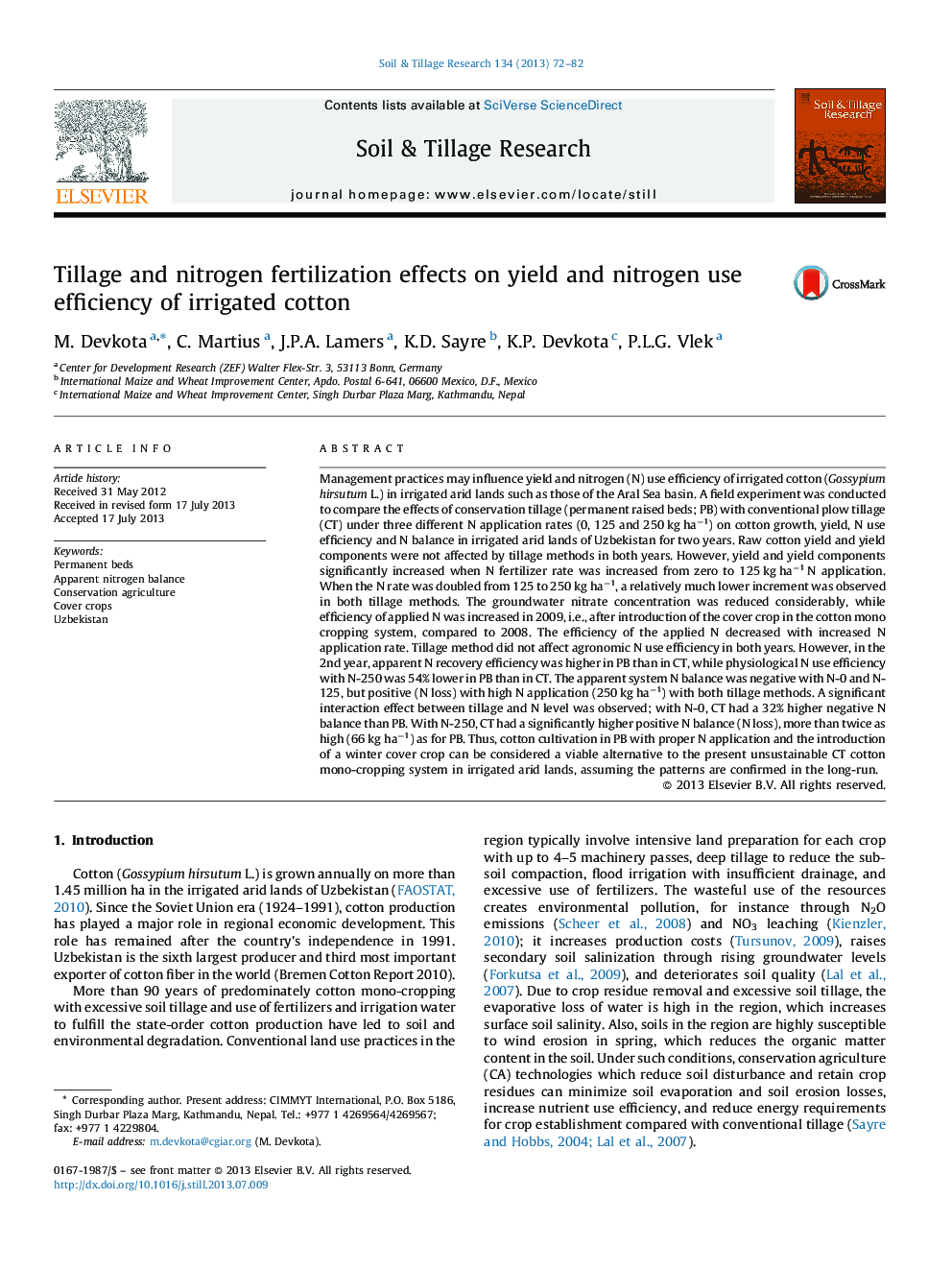| کد مقاله | کد نشریه | سال انتشار | مقاله انگلیسی | نسخه تمام متن |
|---|---|---|---|---|
| 305802 | 513052 | 2013 | 11 صفحه PDF | دانلود رایگان |

• Intensive soil tillage is not necessary for cotton cultivation in irrigated arid lands.
• Cover crop in cotton mono-cropping systems can increase the efficiency of applied N.
• Response to applied N can be higher in permanent beds (PB) than in conventional system (CT).
• Cotton production in PB system does not require increased N fertilizer dose than in CT.
• PB with cover crop and N application can be a viable alternative to CT cotton in irrigated arid lands.
Management practices may influence yield and nitrogen (N) use efficiency of irrigated cotton (Gossypium hirsutum L.) in irrigated arid lands such as those of the Aral Sea basin. A field experiment was conducted to compare the effects of conservation tillage (permanent raised beds; PB) with conventional plow tillage (CT) under three different N application rates (0, 125 and 250 kg ha−1) on cotton growth, yield, N use efficiency and N balance in irrigated arid lands of Uzbekistan for two years. Raw cotton yield and yield components were not affected by tillage methods in both years. However, yield and yield components significantly increased when N fertilizer rate was increased from zero to 125 kg ha−1 N application. When the N rate was doubled from 125 to 250 kg ha−1, a relatively much lower increment was observed in both tillage methods. The groundwater nitrate concentration was reduced considerably, while efficiency of applied N was increased in 2009, i.e., after introduction of the cover crop in the cotton mono cropping system, compared to 2008. The efficiency of the applied N decreased with increased N application rate. Tillage method did not affect agronomic N use efficiency in both years. However, in the 2nd year, apparent N recovery efficiency was higher in PB than in CT, while physiological N use efficiency with N-250 was 54% lower in PB than in CT. The apparent system N balance was negative with N-0 and N-125, but positive (N loss) with high N application (250 kg ha−1) with both tillage methods. A significant interaction effect between tillage and N level was observed; with N-0, CT had a 32% higher negative N balance than PB. With N-250, CT had a significantly higher positive N balance (N loss), more than twice as high (66 kg ha−1) as for PB. Thus, cotton cultivation in PB with proper N application and the introduction of a winter cover crop can be considered a viable alternative to the present unsustainable CT cotton mono-cropping system in irrigated arid lands, assuming the patterns are confirmed in the long-run.
Journal: Soil and Tillage Research - Volume 134, November 2013, Pages 72–82